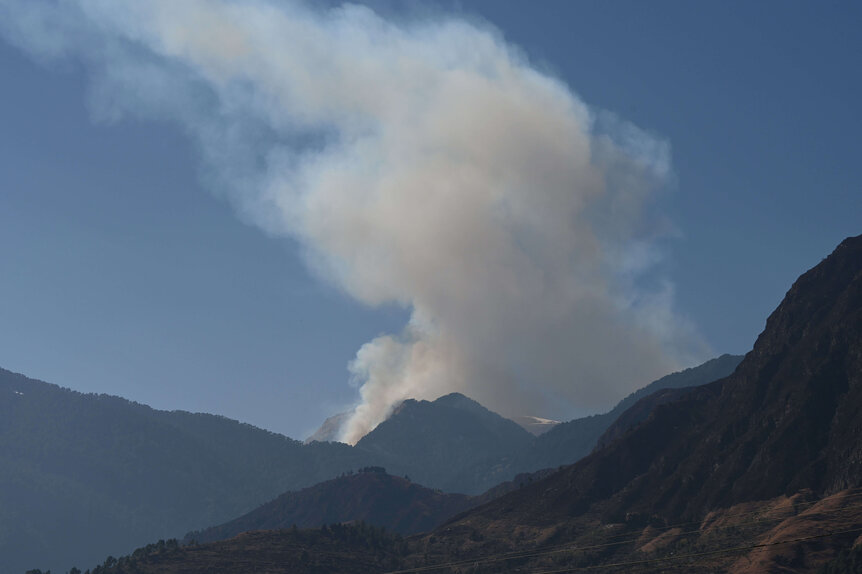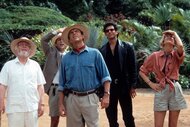Create a free profile to get unlimited access to exclusive videos, sweepstakes, and more!
How did hundreds of human skeletons mysteriously end up in a faraway lake?

Hidden away in the Indian Himalayas, Roopkund Lake may appear serene, but it is hiding dark and disturbing secrets. Hundreds of them.
Why hundreds of human skeletons have washed up from this lake is a mystery that has been haunting historians and scientists since the bones were first discovered by a shocked forest ranger in 1942. The bones have been rumored to be everything from the remains of soldiers who fell in battle on the way to invade Tibet, to pilgrims who froze to death, to holy men who committed ritual suicide. Now genetic analysis has found their DNA is a match for people from the eastern Mediterranean rather than locals, which only deepens the mystery.
“The genetically, temporally, and isotopically heterogeneous composition of the groups at Roopkund Lake was unanticipated from the context in which the skeletons were found,” said geneticist David Reich, who published a study in Nature.
There is a supernatural legend that lurks in this lake. Worshippers who take off on a pilgrimage for the Hindu goddess Nanda Devi must pass the lake of doom. Once upon an uncertain time, a king from far away, though how far is also uncertain, angered Nanda Devi to the point she plagued his kingdom with drought. He decided to make it up to her by going on a pilgrimage, except he wasn’t actually being too pious by bringing along an entire entourage of dancers and whatever luxurious things made him feel as if he was still in his palace. Deities can see through anything, and Nanda Devi’s temper exploded into a lethal hailstorm. The bones are a grim reminder.
When the skulls among the remains were studied, it turned out that the hailstorm was not entirely a myth. Several of the skulls had been hit with a force that was probably not from any sort of weapon made. After studying the compression fractures on these skulls, the research team concluded that whatever object dealt that kind of blow was no sword, spear, or dagger, but had to be blunt and round. That may not rule out every single kind of weapon — as in the hypothesis of priests who could have used such a weapon to sacrifice themselves to the gods — but it does include hailstones.
Roopkund Lake also lies in an area notorious for violent hailstorms (along with landslides and avalanches). If there is any truth to the legend, it is that pilgrims do pass from there, humbly clad in thin clothing that offers little protection from the massive hailstones which pummel the mountains. The bones that Reich and his team labeled the Roopkund A cluster seem to have been from humans on a pilgrimage who had succumbed to a hailstorm. The Roopkund B cluster confused the researchers more, because their DNA makes them out to be of eastern Mediterranean descent. There even could be an exception to that.
The reason why a supposedly Mediterranean group of people might not have actually been what genetic data made them out to be is migration. They could have been the descendants of people from that region, but eventually drifted further and further East to a place close enough to Roopkund for a pilgrimage to seem reasonable. Never trust at-home DNA tests for this reason — they only tell you where the majority of people with your genes ended up. What these tests don’t say is where your DNA actually originated from, so they could be way off, as in thousands of miles off. Where the Roopkund B cluster actually came from was never really demystified. They and the Roopkund C cluster were both determined to have had markedly different diets than people who live in the area now and inhabited it in the distant past.
Because the individuals in cluster B and C died only within about the last two hundred years, there may be records of traveling parties somewhere, though documents so old could have easily been lost. There is still a chance that some evidence of travelers may solve this cold case.
“[We got] meaningful insights about an enigmatic ancient site,” Reich said. “More generally, this study highlights the power of biomolecular analyses to obtain rich information about the human story behind archaeological deposits.”















